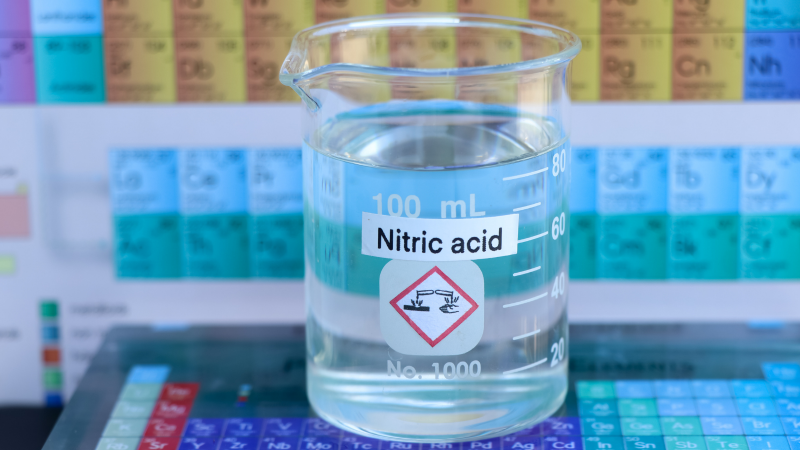
How Is Nitric Acid Determination Performed in Laboratories? Reduce Risk with Accurate Analysis
How Is Nitric Acid Determination Performed in Laboratories? Reduce Risk with Accurate Analysis
Contents
Nitric acid is a highly reactive and corrosive chemical widely used in industrial and laboratory settings. Due to its hazardous nature, nitric acid testing must be conducted under precise and controlled laboratory conditions to ensure safety and accuracy.
What Is Nitric Acid and Why Test It?
Nitric acid (HNO3) is a key raw material in industries such as fertilizers, explosives, dyes, and metal treatment. Determining its concentration is essential for process safety, environmental compliance, and product consistency.
Benefits of Accurate Testing:
- Maintains chemical balance
- Prevents workplace accidents
- Ensures product quality
- Supports regulatory compliance
How Is Nitric Acid Determined in Labs?
1. Sample Preparation
The sample is carefully diluted to an appropriate concentration. Lab-grade nitric acid is typically 65–70%, and dilution must be performed cautiously to avoid exothermic reactions.
2. Titrimetric Method
This is the most common technique. A strong base (usually NaOH) is titrated against the acid using an indicator such as phenolphthalein. The amount of base used indicates the HNO3 concentration.
3. Spectrophotometric Method
Based on colorimetric changes and light absorbance measurements at specific wavelengths. Preferred when high sensitivity is required.
4. Ion Chromatography
Used for advanced applications, this method detects not only nitric acid but also nitrate ions, ideal for environmental and mixed-matrix samples.
Safety Measures During Analysis
- Use acid-resistant materials (e.g., PTFE instead of glass)
- Wear PPE: gloves, goggles, and lab coat
- Ensure good ventilation
- Prepare fresh samples and avoid delays
Conclusion
Nitric acid determination is not just a chemical test — it's a critical procedure for industrial safety and environmental responsibility. Proper laboratory analysis minimizes operational risks and ensures legal compliance.
Frequently Asked Questions
Which method should I choose?
Titration is sufficient for general applications; use spectrophotometry when high accuracy is needed.
What is the error margin in laboratory analysis?
With proper calibration, it can be kept under 1%.
Can this test be done at home?
No. Due to its hazardous nature, nitric acid must only be tested in professional laboratory settings.

